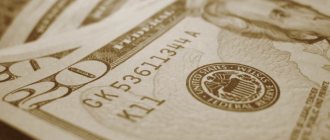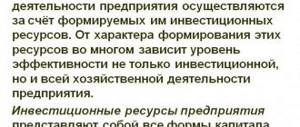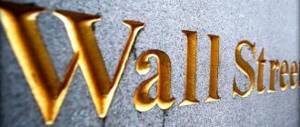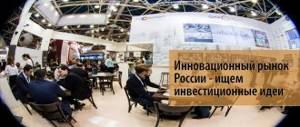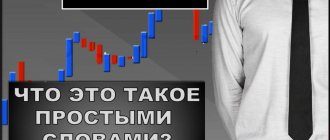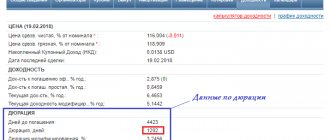In simple words , a recession is a decline in the economy of a particular country/region or the world as a whole; during this period, the rate of production also decreases.
This is a natural phenomenon; it can be considered as a small retreat before conquering new heights. During a recession, the standard of living of most of the population decreases, business activity decreases, which affects the state of business. Today we’ll look at how to recognize an impending recession and how to hedge your bets so that a recession doesn’t become a disaster. From this article you will learn:
- Recession in the economy - what is it in simple words?
- The causes of the recession and the pattern of its development
- Types of Recessions
- Factors indicating a recession is approaching
- Examples of recessions in the global economy
- What to do during a recession
- Conclusion
World recession
At the turn of 2015-2016, many major players in the international financial market started talking about an approaching global recession. Every month, more and more managers, business owners, investors, analysts and experts share pessimistic forecasts.
The famous Japanese brokerage house Daiwa was one of the first to speak about the impending global financial crisis. Before official statements from representatives of this organization, no one dared to be the first to express their opinion. Among the possible reasons, the unstable situation in the Chinese economy was named.
Daiwa representatives also believe that the looming global recession will be the largest in the history of world economies.
Reasons[edit | edit code]
The causes of recessions can be different; explanations of recessions are closely related to the concept of business cycles in the economy. Different economic schools define the causes of a recession differently, and even from the point of view of the same economic school, recessions can have different causes. N. D. Kondratiev explains the cycles and corresponding recessions of long waves by a change in technological structures. The reasons for the recession in Western countries and in Russia also differ. The latest recession in the United States and Western countries was provoked by the situation in the financial markets and the securities market, primarily mortgage-backed securities. The 2001 recession in the United States is associated with a fall in investment in new sectors of the economy (such as information technology) and a decrease in their efficiency. The 2008 recession in Russia is associated with a fall in world oil prices and a low level of production volumes in non-resource sectors of the economy. The continuation of the crisis in Russia in 2010 and 2011 is associated with the so-called “raw materials curse”, the growth of the public sector of the economy, rising taxes, the lack of reforms in the law enforcement system, leading to inequality among market participants, and monopolization of the economy.
Recession period
If we talk about the Russian economy, the first alarming signals came back at the end of 2013. It is too early to talk about the end of the recession. Moreover, the crisis that has broken out has already been called the largest in the history of the state’s economy. The only exceptions are the so-called transformation shocks associated with the transition from a planned to a market economy.
The main factors destabilizing the Russian economy today are considered to be the global recession, sanctions from the United States and Western European countries, as well as the financing of military campaigns.
A crisis
The expression crisis comes from the Greek word for “turning point.” The term was most often used in medicine. Since the crisis was the decisive stage of the disease after which there was an improvement or no improvement. Only in the 17th century the concept of crisis began to be used to social phenomena, political, military. But the first economic crisis occurred in the 19th century, in 1857, when problems occurred that affected Great Britain.
There are many definitions of the word crisis, they vary, but they agree on one thing: this is a sharp deterioration in the economic condition of the state, which manifests itself in:
- depreciation of the national currencies;
- production reduction;
- rising unemployment, prices;
- a decrease in the standard of living of the population;
- bankruptcy of enterprises.
What kind of crisis is happening now, financial or economic? Some economists try to refer to this limitation. An economic crisis is when there is a sharp, significant deterioration in macroeconomic indicators: inflation, unemployment, etc. The financial crisis is associated with financial assets - a decrease in currency, assets, problems with bank deposits. In fact, in the real world it is difficult to make a clear distinction. It is extremely problematic to say what exactly became the root cause of the situation in the world. In 2020, two phenomena in the form of a financial and economic crisis are present and occur simultaneously. Because financial assets collapsed even when there were no representative statistics.
Causes of recession
Today, the Russian Federation remains a state with a resource-based economy. For this reason, the fall in the export price of gas, oil and other minerals becomes the main cause of recession and a sharp decline in economic growth. Even a slight decrease in the cost of resources affects budget revenues. The deficit is growing, requiring additional spending to cover it. To solve this problem, the state is resorting to unpopular measures: cutting funding for social programs, cutting costs for medicine, education and culture. Often such temporary measures further enhance the negative effect.
Business cycle phases
Business cycle phases
The business cycle represents regular changes in the level of production, including employment and profits. The duration of one business cycle ranges from 2 to 10 years. The economic cycle is a single process that sequentially passes through periods of economic activity; they differ in direction and level of activity.
There are the following phases of the economic cycle:
Crisis, aka recession
Subsequently, economic equilibrium is disrupted. A crisis occurs after a recession—production growth is accompanied by a decline. A crisis state occurs after a decrease or decrease in the volume of manufactured products; in particularly difficult situations, a reduction in work entails the destruction of productive forces.
In a market economy, a production crisis most often occurs; it negatively affects the sale of goods, a fall in prices and production volume. A decrease in production volume and subsequently the balance of unsold inventories, a reduction in production, a drop in demand for labor, a decrease in profits, a decrease in creditworthiness and a slowdown in the growth of prices for manufactured goods and services are factors of recession.
A production crisis due to the insolvency of an enterprise leads to bankruptcy.
Depression
Follows the crisis. During a depression, surplus products are gradually sold off, product sales resume and production volumes increase. The economy is stagnant and GDP has stopped falling.
The resulting free capital is integrated into banks, which expands the possibilities for providing loans. Gradual economic growth during the depression stage precedes economic recovery. At this phase, organizations face the main task of increasing profits; during the crisis, costs were reduced.
Revival
Is the latest level of economic recession. During the recovery phase, there is a gradual expansion of reproduction and a return to the level of the pre-crisis state.
The main phase of the economic cycle is crisis (recession). A crisis accompanies the end of one period of development and precedes the emergence of a new cycle, thus cyclicality arises. During a crisis, the entire established reproduction pattern is destroyed and a new, more developed system is created. The mechanism of falling prices during a recession leads to falling stock prices, falling interest rates, declining profits, and bankruptcy.
The crisis eliminates the overaccumulation of capital through the depreciation of funds, which stimulates the renewal of production and improvement of technology.
https://www.youtube.com/watch?v=dk77h9tTc4M
Recession in Russia
Many foreign and domestic experts are inclined to believe that the recession in the Russian economy will last almost the entire 2021. There are fewer optimistic forecasts every month. Managers of one of the largest banks in the Russian Federation generally believe that the internal crisis will not end in the next three years.
The influx of investment and growth in industrial production rates are easy to predict - according to these indicators, positive dynamics are not expected either in the short or long term. According to the most conservative estimates, the Russian economy will lose about $250 billion over the next three years.
Default
This is a kind of failure to comply with the loan agreement. Payment of interest or principal according to stated debt obligations. Default is bankruptcy. A company, state, or private person can declare a default.
It is important to note the technical default here. It appears when the borrower cannot fulfill the terms of the agreement and refuses to pay interest or part of the underlying debt. In this case, it should be noted that now at the moment he cannot fulfill his obligations, but in the future he physically thinks of paying off the debts and fulfilling it.
When we are talking about a full-fledged default, it turns out that the government of the country refuses to pay the debt - this is a sovereign default. 1998 is known to everyone, when the Russian Federation's obligations under GKOs exceeded its capabilities, and the country's government refused to pay the debt. As a result, all financial investments of residents of the Russian Federation became worthless, and the banking system was practically resolved.
At the moment, all that remains is to wait and observe the situation in the world and in the Russian Federation. Let's believe that we can avoid the worst-case scenario.
Production recession
Industrial production has become a sore subject for Russia in recent years. In addition to the raw materials industries, only minor attempts have been made to revive other areas, including the production of equipment, agricultural machinery, and unit assembly of automobiles.
In the last one and a half to two years, these insignificant rates of development have completely stopped. At the beginning of this 2021, some economists predicted the beginning of economic recovery. At the same time, another group of analysts believes that the production recession continues in the Russian Federation. Official statistics confirm the pessimistic forecast. It is noteworthy that against the backdrop of the crisis, the production of oil and other export raw materials continues to grow.
Expert forecasts
One of the latest reminders of the impending recession in Russia was an analytical note from the Institute for Economics of Growth. Stolypin. In the document, experts said that if we take into account the tough tax and monetary policies in Russia, as well as the weak effect of national projects, then a technical recession in the country could occur as early as 2021.
Analysts noted that economic activity in the country is gradually declining. For example, the number of employees of small and medium-sized businesses has been decreasing monthly since August 2021. If then the number of employees was above the 16 million mark, today the figure is around 15.7 million. Also in July 2021, the number of SMEs decreased by 0.9% when compared with the same period last year. There are just over 6.2 million SMEs left on the market.
At the same time, many organizations, guided by weak data for the first quarter of 2021, have already begun to lower their forecasts for the pace of development of the Russian economy. Thus, the IMF gradually lowered its forecast estimate from the initial 1.8% to 1.2%. The World Bank also lowered its estimate to 1.2%.
Officials, however, are in no hurry to draw conclusions. For example, in June 2021, Minister of Economic Development Maxim Oreshkin said that a recession is a steady decline that is noticeable in a large number of different indicators. For now, in the minister’s opinion, it is too early to talk about this.
He also explained that the problems of the first half of the year in terms of economic growth rates are well known. For example, in May the results were influenced by long weekends and the calendar factor. According to him, it is the third quarter that will be decisive in terms of the dynamics of growth rates for the year as a whole.
Market recession
In fact, the concept of a market recession is appropriate to apply when the rate of decline in GDP is fixed for two or more quarters. To put it even more simply, during a recession, industrial enterprises produce fewer products, retail chains sell less goods, and consumers reduce their expenses.
For example, the recession in the US mortgage market followed a similar scenario. Banks issued too many unconfirmed loans and then tried to write off some of the assets. In fact, financial institutions ended up with orders of magnitude less money than they expected to borrow from borrowers. As a result, the procedure for issuing new loans sharply tightened, thousands of workers were laid off, and budgets for investments and purchases were seriously cut.
Financial recession
When a financial recession begins in a country, business representatives experience an acute shortage of financial resources. As a result, it is necessary to reduce production rates, stop it completely, or optimize costs. One of the most popular ways is to fire some of the ineffective employees. If a recession lasts long enough, the unemployment rate in a country begins to increase. The purchasing power of the population is falling, followed by a decline in the income of businesses, which provide fewer services and sell fewer goods. This is how another economic recession begins to spiral.

